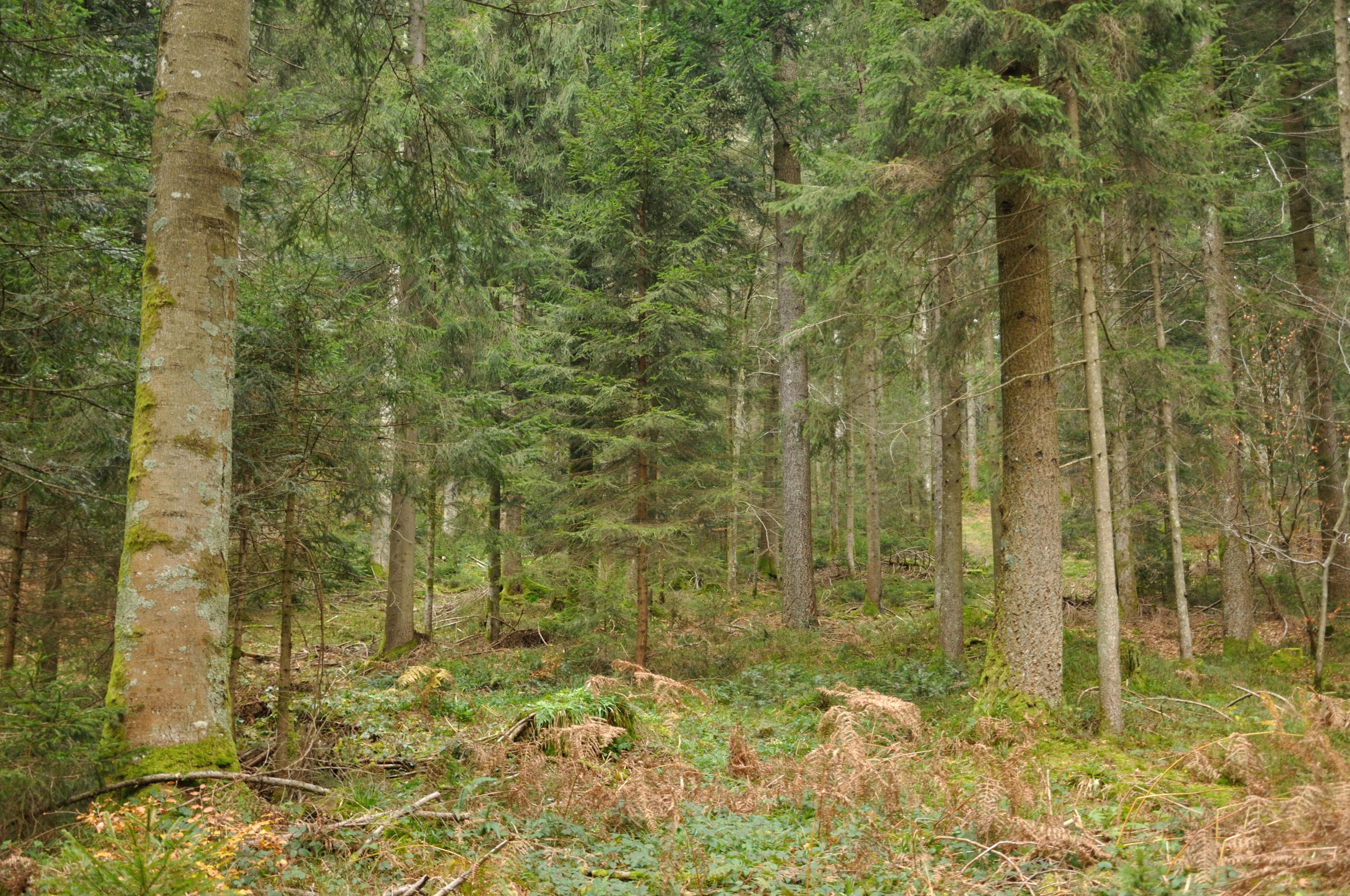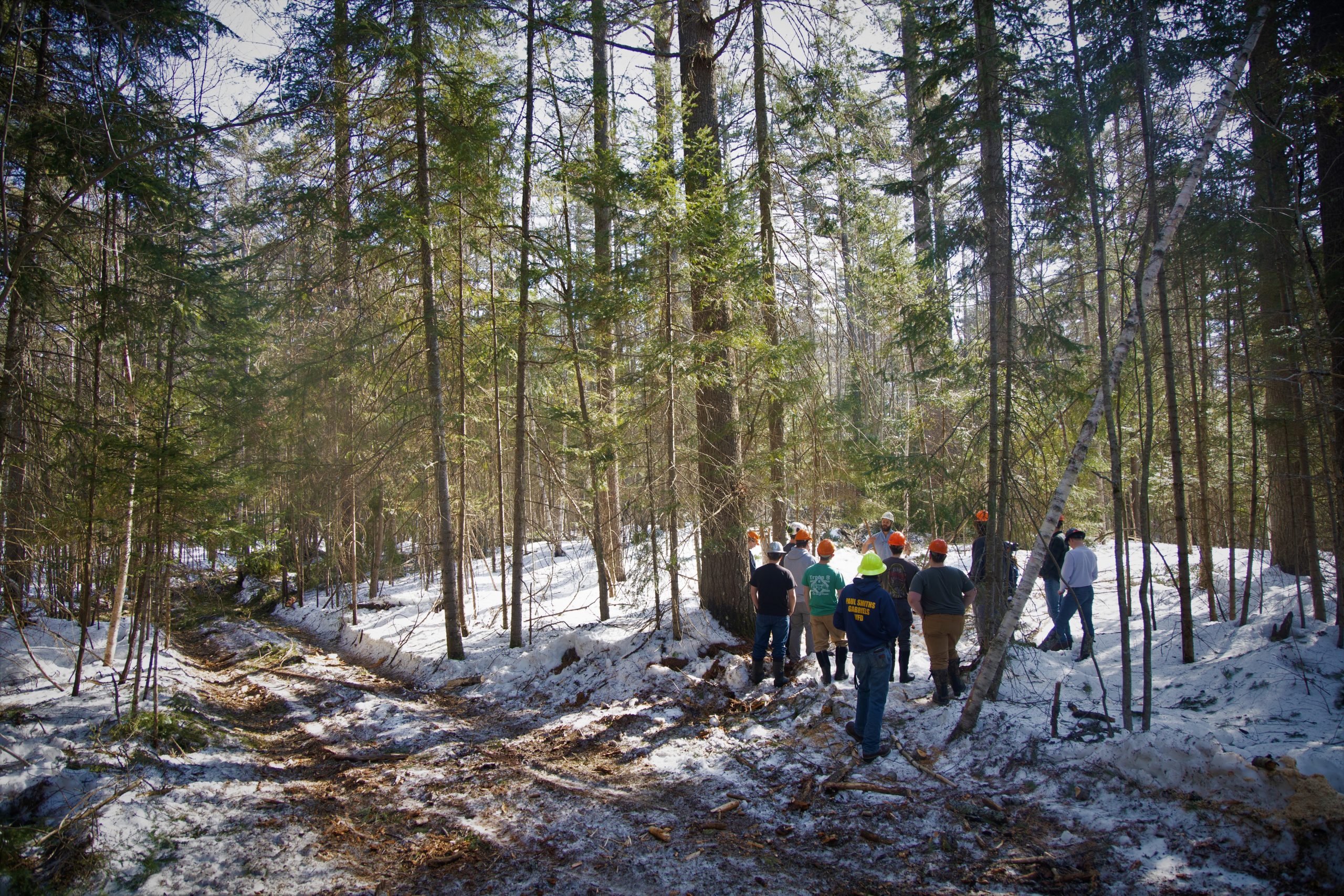New Zealand’s native forests have the potential to be world-class, producing timber sustainably and conferring many other benefits. Such forests require far-sighted and knowledgeable foresters – people who are intrinsically motivated to maximise complex economic, ecological and social values over an infinite time horizon. Long-term, far-sighted investment models are also needed, and the author discusses some important facets of these and the role for policy in catalyzing investment in native forests.
To envision the future forests of Aotearoa New Zealand, or of any region, having grown into their full potential is to see a future worth working for. Verdant landscapes supply impeccably clean water, support thriving populations of native plants and wildlife, and bring purpose and prosperity to the human communities the forests embed, all while providing the material foundations for a sustainable, carbon-negative bioeconomy. Such forests are scattered around the globe, and they have much in common. They are all carefully managed to maintain their diversity, complexity, and longevity. Full-potential forests are the outcome of thoughtful, farsighted forestry. New Zealand’s future forests can and should live up to this vision.
Progress in developing an effective forest policy regime depends on unpacking a series of big questions: How do world-class foresters actually ‘do’ world-class forestry? How do institutions inhibit or enable that practice? What policy instruments would create an enabling institutional environment that fosters world-class forestry?

West Coast. Credit @liamjphilp
Part one: The practice of world-class forestry
The physical motions of excellent forestry are uncomplicated. A forester simply walks through the woods and with an occasional squirt of paint indicates which trees to cut or which to keep. Yet in a group of just 20 trees there are over a million combinations of harvest and retention. Each combination sets an ecological drama into motion that yields a unique stream of timber revenue, ecosystem services, and other social benefits over the decades and centuries that follow. Somehow, truly expert foresters consistently make the one-in-a-million decision best for society. And then they walk a few meters forward to face the next group of trees and the next million possibilities.
World-class forestry is distinguished by the amount and quality of thought that directs foresters’ simple actions. It requires scientific rigor, economic logic, and the intellectual agility to merge the two on the fly. Foresters read the past and see the future in each tree, and then take decisive action with boots planted firmly in the present. The best foresters all possess a breadth of local and technical knowledge, which they apply tree-by-tree, day in and day out. By continuously pursuing, accumulating, and deploying that knowledge—incomplete though it always is—these foresters became expert. They then draw on that expertise to cut through the complexity beyond the reach of calculative analysis, getting to the one-in-a-million solution without totalling up a million-minus-one other scenarios.
The practice of excellent forestry unfolds one forester at a time, but it depends on larger institutions. Professional institutions mould foresters’ conception of their work. Social, political, and economic institutions shape who owns forests and how they approach ownership. Together, these institutions provide the motivation and the opportunity for dedicated foresters to grow into true experts.
Once, many of the world’s best foresters were on the fringe of the profession and only found a home in niche professional organizations. Many of the ethics and ideas that distinguished these organizations have moved into the mainstream, but there is still a critical role for strong professional norms to steer foresters’ behavior toward long-term, pro-social value creation. The world’s best foresters take pride in the value they create for society and feel a duty to practice forestry at its best. Strong professional institutions bolster that commitment, but the demands imposed by landowners are too often at cross purposes here. Thus, excellent forestry also depends on who owns forests and why. Forest owners vary in their degree of vision and sophistication, in the resources they can commit, and in the obligations they must accommodate. Effective institutions channel the ‘right’ individuals and organizations into forest ownership and screen out those whose impatience and irresolution are mismatched with the scale, scope, and complexity of thoughtful, farsighted forestry.
The institutions of the forestry profession and the institutions of forest ownership both affect the outcomes of forest management through three channels. Rules and norms, written and unwritten, influence the extent to which foresters (i) feel intrinsically motivated to practice forestry at its best, (ii) have the requisite technical skills and material resources to implement forestry at that level, and (iii) perceive a clear mandate to create value over forest-relevant time scales.
Psychologists have long viewed intrinsic motivation—the desire to act based on interest and enjoyment of the work itself, rather than an external promise of rewards or threat of punishment—as a key driver of engagement, commitment, and performance in work settings. The extent to which external goals and objectives become internalized depends on the feelings of autonomy, competence, and relatedness associated with the work. Intrinsic motivation is strongest in high-trust settings where significant discretion is exercised, in jobs where the task is challenging but doable, and where the work is understood to be meaningful and fosters connection with others.
The practice of excellent forestry fits naturally here. Still, two points deserve special attention. The first is to acknowledge how ill-suited excellent forestry is to conventional incentive schemes. The work of managing diverse, native forests is intellectually and physically demanding, but foresters face those demands miles away from a boss’s or client’s watchful eye and decades removed from the final accounting of the value they create. Profit sharing makes no sense when the profit foresters capture owes to previous generations’ work and the profit they create passes to the next generation ‘on the stump’. Piece-rate compensation makes no sense when the primary inputs and outputs—thoughtfulness and attention on the one hand; complex, future-value-laden forests on the other—are both unmeasurable.
The real risk of these schemes is not merely that they are hard to administer. Overly ‘contractarian’ relationships actively crowd out the intrinsic motivation that would otherwise drive foresters’ actions. Purely economic incentives are a signal that narrowly self-interested behavior is expected and acceptable, and that other social norms should be ignored. Fostering intrinsic motivation is the only efficient way to incentivize world-class forestry.
Of course, foresters cannot make good on that intrinsic motivation without proper training, the right tools, and enough time. Excellent forestry depends on high standards of professional education and strong norms of mentorship and knowledge sharing, all of which take more than just inquiring individuals. And the willingness to invest in on-going training, like the investment in tools and time, is an immediate cost borne for an uncertain, far-off return. Even if careful analysis supports that investment, the analysis itself may be prohibitively costly. Effective institutions clear these obstructions from the path of long-term thinking.
All of which brings us back—as is so often the case in forestry—to the question of time horizons. World-class forestry is a long-term endeavour like few others in modern society. Value creation unfolds slowly, spanning multiple generations of foresters and landowners (to say nothing of department heads or ministry officials). Where the attitude of “I’ll be gone, you’ll be gone” prevails, foresters are robbed of the mandate to create value over forest-relevant time scales, starved for resources, and sapped of the intrinsic motivation required to create such value.
Public policy has a critical role to play. Effective policy nurtures the institutions excellent forestry requires. Those institutions then steer the right prospective forest owners toward the world’s current and future best foresters and empower the resulting partnerships to pursue the world’s best forestry.
”Full-potential forests are the outcome of thoughtful, farsighted forestry - New Zealand’s future forests can and should live up to this vision.

Grandleez. Credit Gauthier Ligot, Belgium
Part two: Payment for Ecosystem Services
The economic logic of payment for ecosystem service (PES) programmes is straightforward. If landowners are not rewarded for maintaining functioning ecosystems—that is, if the benefits of ecosystem services such as soil stabilization, water filtration, or carbon storage are unpriced ‘positive externalities’—then the amount and quality of functioning ecosystems will be under-provisioned. Without clear price signals to indicate the social value of these services, landowners and managers allow productive natural systems to degrade for relatively paltry private benefits. With an effective PES scheme in place, landowners reap larger returns by preserving their stock of natural capital, and society is spared the deadweight loss of needlessly foregone ecosystem services.
So goes the economic logic. In practice, PES programmes have also strongly embraced a financialized logic in which PES payment streams are thought of as nearly analogous to financial securities. Standardizing projects allows them to be packaged up and easily traded. Liquidity reduces investors’ cost of capital, allowing more and cheaper capital to flow into the ‘asset class’. In a liquid market with minimal barriers to entry, discipline reigns. Competition drives out all but the least-cost providers, extending the reach of each dollar allocated to conservation. So long as contracts are complete—that is, so long as the PES payments perfectly correspond to the quantity and quality of services provided—then the most efficient, socially-beneficial arrangement is a maximally-liquid, hyper-competitive market for the opportunity to participate in such a programme.
Both logics ignore the informational dimension of the problem. Provision of ecosystem services is not perfectly contractible; PES contracts will always be incomplete. Well-managed forests provide services that are difficult to quantify or, as with biodiversity, to even conceptualize. Some PES schemes issue payments based on proxy outcomes, others on proxy inputs that are assumed to correlate with the sought-after outcomes. In either case, the lowest-cost providers are not those that most efficiently deliver the desired benefits, but those that have can best exploit the imperfect proxies. Thickening the rule book to preclude gaming the system just increases the administrative cost of the programme and creates an arms race between regulators and fund managers, which the political economy of fund management and regulatory administration suggests will be inherently asymmetric.
Most unfortunately, hyper-competitive markets for the opportunity to capture PES payments leave no room for patient, long-term landowners working with thoughtful, intrinsically motivated foresters. Rather than topping up the economic returns earned by those already generating ecosystem services, poorly designed PES schemes drive them off the landscape by creating an overvalued market for enrollable land. These dynamics have plagued PES or PES-like schemes as varied as wetland mitigation banks in North America, anti-deforestation initiatives in developing countries, the European Union’s Natura 2000 programme, and biodiversity offset policies in Australia.
As a rule, policy should anticipate only the lowest level of permissible behavior and payment rates should be set accordingly. Smaller payments pegged to easily measured, if only modestly socially valuable, outcomes (e.g. hectares of native forest) are more effective than generous payments intended to reward highly-valued but hard-to-measure outcomes. The hoped-for benefits of the more aspirational programme never materialize, as adverse selection and the misdirected logic of ‘market discipline’ drive out all but the marginally compliant participants. An altogether different framework is required to reward those more nebulous, high-value outcomes.
World-class forestry is more of an art and science than an industrial production process. Perhaps its funding ought to more closely resemble that of world-class art and world-class science than the private equity buyout of a midsize manufacturer. It is probably for good reason that Creative New Zealand does not construct ‘Payment for Public Art’ schemes along the lines of a financialized PES programme. It would likely produce many murals but few real works of art. Organizations such as the Arts Council of New Zealand Toi Aotearoa or Royal Society Te Apārangi offer a funding model that could be adapted for pro-social forestry. Competitive grants and generous prizes could be awarded based on thoughtful assessment, rather than litigious measurement, of the quality of forestry practice and the value of its outcomes. A securely funded grants-and-prizes programme would create a payoff for practicing high-touch forestry, justifying the increased allocation of tools, training, and time that approach requires. Critically, it would provide this financial incentive without crowding out the culture of professionalism centered on foresters’ duty to society and the land.
”World-class forestry is more of an art and science than an industrial production process.
Valdivia. Credit Gauthier Ligot, Belgium
Part three: Long-term investment in world-class forestry
Whether or not a well-designed PES programme is in place, investing over forest-relevant time scales requires patient capital. Developing policy to channel that flow of capital depends on understanding investor behavior. Investors acquire and manage assets with the aim of generating excess risk-adjusted returns. That is, ambitious investors aim to beat the market. Sophisticated investors know that opportunities to beat the market are rare and usually fleeting. After accounting for expenses and the cost of increased risk exposure, few active investment strategies generate excess returns; fewer still do so consistently.
Truly long-term investors can leverage their structural advantages, even in competitive public markets, to harvest various ‘premiums’ priced in by shorter-term investors but which long-term investors bear no additional risk in holding. Alternatively, in thinly traded private markets, elite investors can develop advantages in valuing and managing highly specialized assets. Thoughtful, far-sighted forestry gives savvy long-term investors access to both of these drivers of excess returns. Growing top-quality native timber through high-touch, nature-based forestry lets investors harvest a generous illiquidity premium and exploit their skills and sophistication in an opaque private market.
Of these two strategic drivers of returns, the case for developing exceptional management capabilities is conceptually less complicated. Consider an average investor in the timberland market, hiring an average forester to advise on a prospective acquisition. Two dynamics work against them, vis-à-vis a highly-skilled capable investor-forester partnership. First, the average forester is simply less able to coax as much value from the forest over the long term. Even if they can accurately project all the asset’s future cash flows, this simply adds up to less capitalized value than what would result from more sophisticated management. But crucially, an average forester will only achieve middling accuracy in modeling the complex financial and ecological processes those cash flow projections depend on. Given the higher uncertainty associated with those projections, prudent investors cap their offer on the asset at a price that maintains enough of a margin to protect them from the winner’s curse. If the best guess of an asset’s true value is sometimes too high and sometimes too low—even if on average it is about right—bidders usually win the auctions where their estimate was too high. The elite investor working with the expert forester is less vulnerable to this pitfall because they can produce a more precise estimate of a forest’s true value. However, asset prices are determined by the second highest bidder’s willingness to pay. The ‘delta’ between a forest’s true value and its market-clearing price is the premium a capable investment team gets to capture.
Understanding the mechanics behind the illiquidity premium is more involved. Illiquid assets are relatively cheap because investors value access to cash. By the logic of supply and demand, investor preference for liquid assets drives up their prices, pushing their returns down. Long-term investors are undaunted by the risk of an unexpected cash call. Owning illiquid assets then generates higher returns for the same degree of effective risk exposure as a lower-yielding liquid asset. Just by tilting their portfolio’s composition toward illiquid assets, disciplined long-term investors harvest this premium.
High-touch forestry also generates an extra payoff for long-term investors in more nuanced ways. First, premium-quality forestland systematically trades at a discount to its true value. The winner’s curse, discussed above, explains part of this story, but there is more involved than just strategic bidding. Because the true value of a forest cannot be established with perfect certainty, prudent buyers’ discount their own empirical valuations of above-average valued properties. There is a higher probability that their sample-derived estimate of a forest’s true value is too high, rather than too low, given the abundance of lower-value properties in the asset universe and the relative scarcity of higher-valued ones. Along with all the regular legal and administrative costs of selling large parcels of real estate, this statistical discounting erodes the returns from a well-managed forest every time it changes hands. Long-term investors bear these costs less frequently, if ever.
Second, and more substantially, short-term investors have far less scope to exploit the long-cycle price processes that affect forest products markets. Only long-term investors can fully capture the real option value of a long-lived, high-value forest. As prices fluctuate over decades-long cycles, adept managers match their harvesting to those cycles. ‘Playing the market’ makes for significantly higher realized prices. Moreover, a forest owner who can successfully execute this ‘adaptive harvesting’ strategy is only exposed to a small portion of the full distribution of price volatility. These gains—both in terms of higher absolute returns and lower price-risk exposure—are only available to forest owners whose investment horizon extends at least as far as one full price cycle.
The third way in which long-term investors are structurally advantaged is more complicated still. Unlike financial securities, forests are real assets and are susceptible to management. The scope and intensity of silvicultural investments and the timing and methods of harvesting should be responsive to the context surrounding those decisions. Most importantly, as the investor’s discount rate changes, management strategies should change, too. Changes in strategy affect the entire project’s risk profile, which necessitates further revaluation and re-specification of the discount rate. There is a distinctive pattern in which these recursive dynamics unfold in high-value forests managed with high-touch forestry. An extended investment horizon allows for management strategies that capture more of a healthy forest’s inherent real option value, which accordingly reduces the investor’s exposure to log market price-risk. Reduced price-risk exposure lowers the cost of capital, which justifies larger target diameters and increased early- and mid-rotation silvicultural investment (in the form of thoughtful foresters’ attention). Those investments enhance the longevity and resilience of the future forest, which increases its real option value, which further reduces price risk exposure, and so on.
To fully leverage these structural advantages, investment organizations must be exceptionally well-governed as well as farsighted. The principal challenge lies in motivating asset managers to create value over such extended horizons, where the gains from any individual’s efforts will not be fully realized until some subsequent generation has assumed responsibility. Incentivization and accountability would seem to present insurmountable governance challenges in such an environment, but as discussed earlier, the nature of the resource and the culture of the resource managers are almost uniquely suited to fostering strong intrinsic motivation. Perhaps surprisingly, the natural home for world-class forestry is a long-term investment organization, albeit one guided by robust investment beliefs and sincere in its commitment to intergenerational value creation.
What, then, is the role for policy in catalyzing investment in native forests in Aotearoa New Zealand? Put another way, if premium quality native forests provide such an attractive investment opportunity, what has held back the world’s most capable, disciplined long-term investors from pursuing these strategies? Undoubtedly, part of the explanation lies in the ‘externalized’ nature of many of the value streams native forests produce. Internalizing these externalities via the PES instruments and mechanisms discussed earlier would surely make some investors take a closer look at the opportunity.
Targeted legal tools, such as conservation easements or bargained-for covenants to permanently restrict non-native planting, would lower the price of ‘bare land’ and could help create an accessible asset class (albeit at a cost). Investors’ toolkits have expanded in recent decades with the emergence of a variety of innovative investment vehicles, including direct investments, evergreen funds, and novel capital structures to leverage philanthropic capital. Finding or building the right tools will depend on the commitment and creativity or the world’s leading long-term investors. Much work remains encouraging further innovation and excellence from the world’s largest asset owners. Government policy has an obvious role in this process.
Ultimately, the most important work toward these ends will come in the form of research, analysis, and entrepreneurial persuasion. Many of the details in the investment case for native forestry have yet to be developed, much less articulated. Nevertheless, as the many contributions to this project demonstrate, that work is now clearly underway.
”The principal challenge lies in motivating asset managers to create value over such
extended horizons, where the gains from any individual’s efforts will not be fully realized
until some subsequent generation has assumed responsibility.

Zurich. Credit Gauthier Ligot, Belgium




Leave a comment